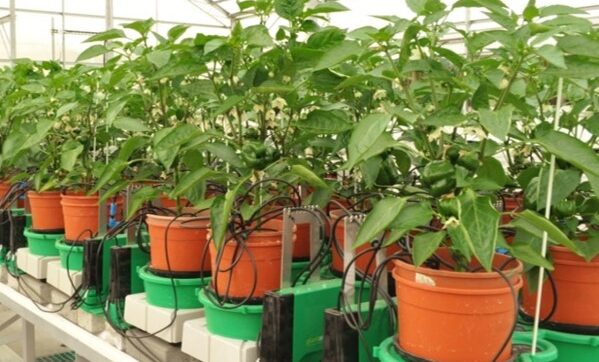Home » Applications » Nutrients & Biostimulants screening
Effect of nutrients, biostimulants & pesticides
The concentration of fertilizers, biostimulants, microorganisms, drugs and plant protection products affect the plant development, growth, and yields. Determining the optimal concentration of different treatments together with the watering regime (i.e. drought conditions) is a great challenge from both an agronomic and environmental aspect. For example, the efficient application of fertilizers optimize plant performance, however, over-fertilization will contaminate the soil and adjacent water bodies (groundwater, lakes, etc.).
The simple to use of PlantArray phenotyping equipment, both hardware and software enable users to control any irrigation-borne treatment concentration as well as its duration, applied to each pot in the array and with most soil types (e.g. sand, field soils or potting medium). The software analyzes the plant response to treatments and presents the data in an intuitive and easy-to-use interface. This enables to grade plants according to their absolute as well as relative response to the different treatment applications and determine the concentration-response curve for each plant in the array.
The ability of the PlantArray phenotyping system to apply, monitor and evaluate the effect of different chemicals on plant performance saves time, labor, and unnecessary experiments, as well as providing immediate proof of concept for new products.

Key benefits of using PlantArray solution:
- Automatic, easy to implement multiple chemical applications via the irrigation system
- Fast and efficient pre-field screening of various chemical cocktails for plant growth potential (within 3-4 weeks) (option of combining with different stress conditions)
- Measure growth rates and productivity prediction based on the soil-plant-atmosphere water balance (supported by field experiments).
- Instant feedback and real-time in-depth statistical analysis of plant performance with clear graphical presentation (no need for physiological background).

Genetic Variation of Drought Response Case Study
